 The marshlands of Chiba must have seemed a forbidding and pestilential place to a young girl peering out from the wretched discomfort of a palanquin as it made its passage back to Kyoto and civilization in the year 1021. Lady Sarashina’s father had just completed a term as Assistant Governor of what is now Chiba Prefecture when this journey was made. Recalling the above scene when she came to write about it many years later she also noted, with something akin to despair, that a mass of reeds had hemmed in their entourage, “growing so high that even the tips of our horseman’s bows were invisible.”
The marshlands of Chiba must have seemed a forbidding and pestilential place to a young girl peering out from the wretched discomfort of a palanquin as it made its passage back to Kyoto and civilization in the year 1021. Lady Sarashina’s father had just completed a term as Assistant Governor of what is now Chiba Prefecture when this journey was made. Recalling the above scene when she came to write about it many years later she also noted, with something akin to despair, that a mass of reeds had hemmed in their entourage, “growing so high that even the tips of our horseman’s bows were invisible.”
She would scarcely recognize Chiba today, where a different kind of wilderness, one of super highways, airports, and pinched, fiercely worked cubes of land and paddy, prevails. There are still areas, however, where nature, the semblance of a wilderness, and even large quantities of towering reeds, have been left to flourish. Inbanuma, a nature reserve and bird forest that can be glimpsed from the Keisei Line train that runs between Tokyo’s Ueno station and Narita airport, is one such place.
Inba Marsh is a wilderness you are unlikely to get lost in. At intervals along the paths, map boards show the layout of the area and its walking courses in both Japanese and English. A brisk 20-minute walk from Usui station, or a slightly longer tramp from Sakura station will bring you to the edge of one of the area’s best preserved water worlds and a natural habitat for countless species of birdlife. Dozens of fish traps and the presence of numerous anglers hint at why so many varieties of birds should be drawn to this well stocked lake. The borders of the lake in fact, support substantial flocks of terns, reed warblers, bitters and wintering ducks, species that find the defensive periphery of reeds and soft marsh a conducive habitat in which to breed.
Inba Marsh is in many ways, a welcome setting for jaded urbanites as well. As you leave Usui station, following an asphalt road along the railway line before veering off in the direction of the lake, the mishmash of electric pylons, high tension wires and temporary looking buildings which make one area of urban Japan hardly indistinguishable from another, gives way to the more engaging prospect of distant bamboo and cedar forests, clumps of sedge and reed, and grassy banks which have been raised above the level of the lake to provide elevated footpaths around its fringes. In spring these attractive, often quite solitary paths are lined with wildflowers such as bee nettle, corydalis and groundsel. In winter, countrywomen in working smocks and bonnets come here to grub for edible nettles and wild herbs. Below these tracks the split and burst remains of wooden retaining dykes and shoring planks of indeterminate age, can sometimes be glimpsed.
 The resemblance of the area to flat, wind swept fen land may explain the existence of a very lifelike Dutch windmill that stands at the southeastern arm of the marsh. The mill, compete with its own moat and an annual tulip festival, is more authentic than you might at first think. A Dutch company was commissioned to design and build it in 1994, and Dutch mechanics come over every year to maintain and service it. “I just cannot know,” the homesick mechanic who rushed out as I passed to inquire if it were Dutch said, “why they would build a mill here!”
The resemblance of the area to flat, wind swept fen land may explain the existence of a very lifelike Dutch windmill that stands at the southeastern arm of the marsh. The mill, compete with its own moat and an annual tulip festival, is more authentic than you might at first think. A Dutch company was commissioned to design and build it in 1994, and Dutch mechanics come over every year to maintain and service it. “I just cannot know,” the homesick mechanic who rushed out as I passed to inquire if it were Dutch said, “why they would build a mill here!”
A number of other auxiliary amusements have sprung up around the marsh. Families or adults who tire from too much exposure to unbridled nature will enjoy a stroll around the nearby Sakura Natural Vacation Village with its toy railway, camp site and collection of old buildings, a do-it-yourself pottery center down the same road, or an orchid nursery that also raises cherry trees a little further on.
Nature lovers and ornithologists though, are the main visitors to Inba Marsh, the principal object of their trip here being, apart from the bucolic walk themselves, a visit to the lakeside bird observatory and nearby wild bird forest. Visitors often repair to the observatory for lunch, as there is a modest but well-appointed restaurant there, which affords sweeping views of the lake and the forested escarpment below. Entrance to the observatory is free.
The boughs of the trees of the wooded section behind the observatory support a large number of birdhouses, a sure sign that you have found your way to the area designated as the Wild Bird Forest. Although silence and patience are required in order to spot them at close range, this is your best chance of seeing wagtails, magpies, the occasional brown-eared bulbul, even the relatively rare bull-headed shrike that inhabit the woods and adjacent fields. If you hear the neurotic sound of drilling, it will probably be the Japanese pygmy woodpecker at work. A tour of Inba Marsh and its connected attractions can be accomplished in one vigorous half-day, but why go to such lengths to condense nature? The reason for going there after all, is to relax and replenish the spirit, not to set yourself a test.
It’s not far from here to Narita, a city with a temple that most people already know about and have in all likelihood visited. The JR Narita Line, though, takes many people into terra incognito, particularly the grassy burial mounds known as Fudoki-no-oka. Alighting at Ajiki Station, the tombs are an eight-minute bus ride. The 300,000 square meter park contains 113 burial mounds, the largest being the 78 meter-long Iwaya tomb. The park’s Archeological Museum houses Kofun artifacts excavated from the burial mounds, including Haniwa (clay figures of men or animals) and Sue ceramics. Although this is essentially a cemetery, the setting, with shady trees and soft grass, make it a perfect spot for a spring picnic.
T he Chiba Prefectural Museum Boso no Mura, an open-air historical theme park of reconstructed buildings from the later Edo to the early Meiji periods, stands next to the burial park. What the replica buildings lack in authenticity, it make up for in the experience-based activities visitors can enjoy. These include weaving at a farmhouse, dyeing cloth, preparing local cuisine, even trying on a suit of samurai armor.
he Chiba Prefectural Museum Boso no Mura, an open-air historical theme park of reconstructed buildings from the later Edo to the early Meiji periods, stands next to the burial park. What the replica buildings lack in authenticity, it make up for in the experience-based activities visitors can enjoy. These include weaving at a farmhouse, dyeing cloth, preparing local cuisine, even trying on a suit of samurai armor.
Finding the perfect, companionable Buddha can become an obsession. Foreigners living in Asia are often struck by this calm, enlightened face, its features contrasting sharply with the figures of Western religious art, their often contrived depictions of the ecstasy of Christian saints, the agony of the cross. “Wisdom. Compassion. Protection. Peace of mind! And for sheer devotional value, nothing beats a Buddha,” Jeff Greenwald writes in his travelogue, “Shopping For Buddhas.”
Artistically, the small, nicely oxidized Buddha that stands on one of the upper shelves (Buddhas should never be displayed at heights below their owners) of my own study, supposedly buried for over 400 years in the earth floor of a cave in the Northeast of Laos, is an inferior work, no doubt cranked out in haste and multiplied ad infinitum to satisfy the needs of some enigmatic quota. For those interested in such things, the search for a more perfect Buddha, one that is affordable, can take a lifetime, perhaps several. Some Buddhas however, are just too big to take home. Imagine what kind of hydraulic lifting gear or cutting tools would be needed to remove the Daibutsu, Japan’s largest figure of the Buddha, from the rock face at Mount Nokogiri on the Chiba coast. From the base to the tip of the giant lotus bud that stands behind the statue’s head like a stone antimacassar, it measures an impressive 31.05 meters.
Decapitated Buddhas and Bodhisatvas are a common enough sight in Southeast Asia, most spirited away to antique showrooms in Bangkok or auction houses in London. In the case of Japan, the headless statuary one encounters is more likely to be the result of religious purging and violence–the act of one militant sect or schismatic order deemed unacceptable for some doctrinal reason or infraction.
Some of the smaller statues, sitting in accessible niches dotted over the mountain here at Nokogiriyama, have not fared as well as its Great Buddha. Many were destroyed or left in ruins, not by opposition sects in this instance, but by an anti-Buddhist movement that sprang up in the early Meiji era.
The southern and western region of the Boso Peninsula is known as Uchibo. Visitors to Mount Nokogiri who arrive by train will have alighted at Kisarazu after crossing the Tokyo Bay Aqualine from Kawasaki, or come down the peninsula from the city of Chiba. The foot of Nokogiriyama is a short walk from Hamakanaya Station on the JR Uchibo Line, a 41-minute ride from Kisarazu.
This part of the journey is the most rewarding. Chiba’s coastal towns are still scarred with high-tension wires and boxy, sub-standard 1960s architecture, and its beaches are cluttered with rubble, rusting chains and concrete tetrapods. After Kisarazu, other more engaging components enter into the landscape: vegetable plots, weather-beaten farms, clumps of bamboo and women standing in flooded rice fields like fleshy egrets in bonnets and smocks.
The location of Mount Nokogiri might have been planned with the contemporary visitor in mind. A four-minute ropeway takes visitors halfway up the mountain. After that, a number of steep flights of steps provide enough physical effort to enforce the sensation of being a pilgrim, at least for the day. The top of the mountain affords a fine panorama of Tokyo Bay and Mount Fuji. On exceptionally clear days, faraway Suruga Bay in Shizuoka Prefecture can also be glimpsed.
The holy mountain has quite an illustrious history, with enough sights to please everyone, including geologists and naturalists. Just as interesting as the Great Buddha itself is a 33-meter Kannon, Goddess of Mercy, carved into the rock face near the top of the mountain and a cluster of 1,553 stone statues of rakan (disciples of the Buddha). The images were carved by the master mason and artisan Jingoro Eirei Ono using stone brought by ship from Izu, before being placed in sacred caves and rock crevices on the mountain. Astonishingly, most of the statues have only been restored in the last few years. A similar, smaller, collection of rakan is said to exist in Huaian in China.
The Daibutsu was originally made in 1783. A combination of earthquakes, the elements and neglect battered and cracked much of the statue. The destabilization of its foundations resulted in a four-year restoration that ended in 1969.High on its windy plinth, the victim of sun and salt erosion, the Buddha, despite its face-lift, looks all of its 200 and some years. No longer “the biggest in the Orient” (that honor now goes to the Buddha on Lantau Island, Hong Kong), Nokogiri’s Daibutsu still fills out the eye.
The soaring Daibutsu belongs to the Nihonji temple, a modest, well-appointed wooden structure that blends unobtrusively with the wooded, leeward side of the hill. According to an imperial edict, the temple was founded in 725 by Saint Gyoki.
The Indian government gave a tree to the temple a few years ago, a sapling that was grown from a branch of the original Bodhi tree under which the Buddha received enlightenment. The tree stands in the Daibutsu square, adding another touch of divinity to the mountain’s sacred aura.
TRAVEL INFORMATION
Inbanuma is a 20 minute walk from Usui station, or a quick taxi ride to the windmill. Bring your own food as there are no restaurants here. Opening hours for Fudoki-no-oka and the museum are: 9am-4:30pm Tue-Sun, closed Mon. By bus from the JR Ajiki Station on the JR Narita Line: about 15 minutes by the Doramu-bus (Loop bus in Sakae-machi). Get off at “Doramu-no-Sato”. Walk about 3 minutes. You can check out the museum and park at www.chiba-muse.or.jp/MURA/. To get to Nokogiriyama from Tokyo, you can either take the Yokosuka Line to Kurihama from Shinagawa, then the bus to the port, and then take the Tokyo Bay ferry to the pier at the foot of Nokogiriyama, or take JR lines to Chiba station. From there, take the Uchibo Line to Hamakanaya station, a short walk to the base of Nokogiriyama.
Story & photos by Stephen Mansfield
From J SELECT Magazine, April 2009

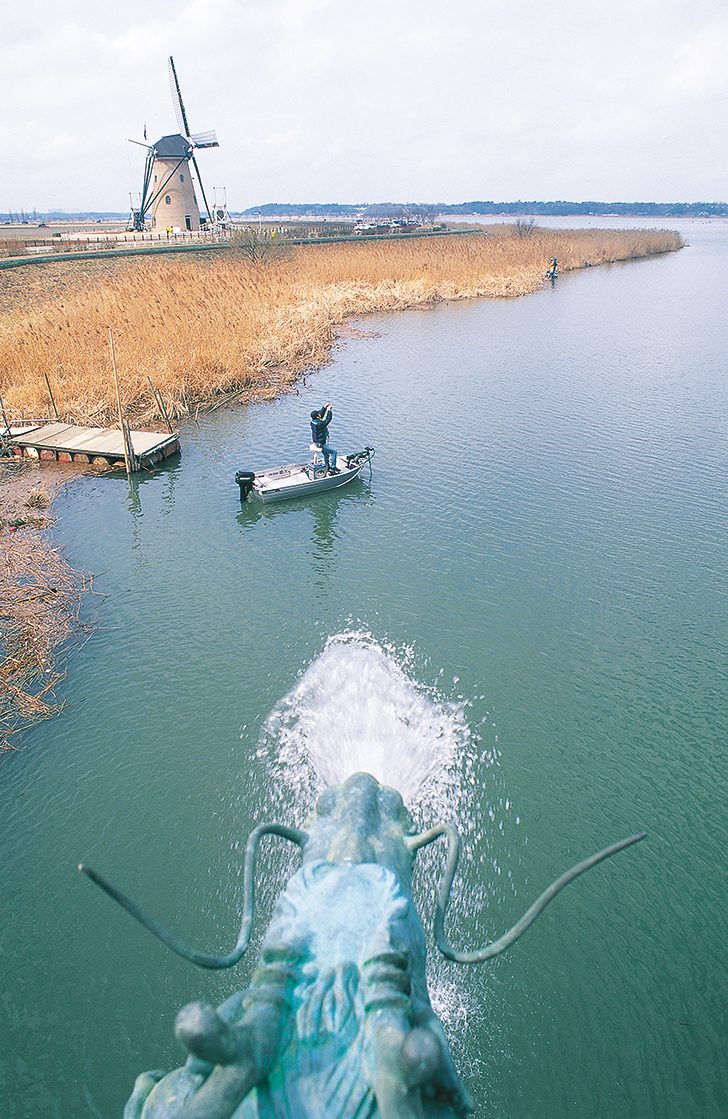



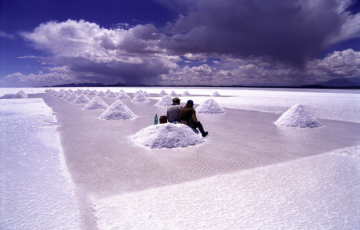

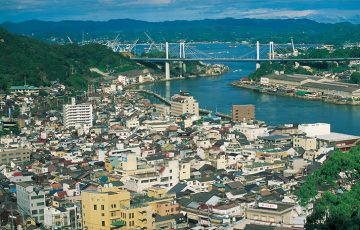

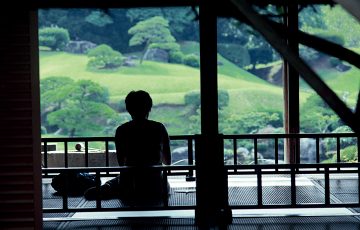
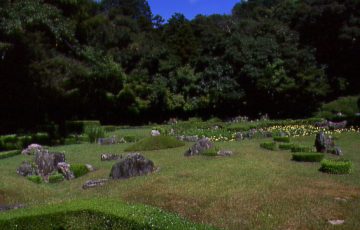
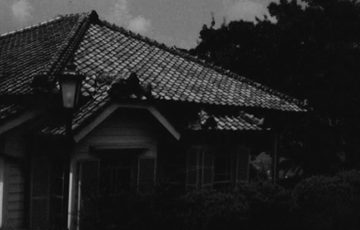
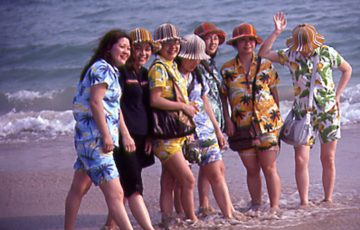


Recent Comments